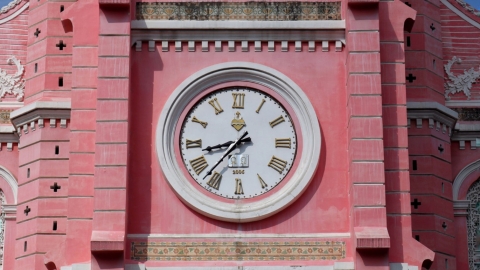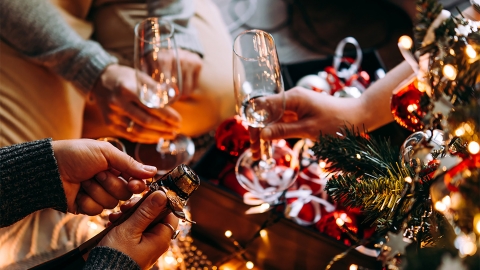Christmas is an occasion for Christians around the world to celebrate the birth of Jesus. Nowadays, this is no longer a holiday reserved for Christians only, but also for non-Christians. Usually, people will start cleaning their houses, decorating Christmas trees and preparing gifts for their loved ones. However, each country has different Christmas traditions.
The Krampus of the Alps
Krampus is a demon that appears in the folklore of the Alpine countries such as Germany and Austria. His name comes from the German word Krampen, which means “hooves”. Nowadays, the custom of dressing up as Krampus with the appearance of a half-man, half-goat, long horns, a mustache, a string of bells, a bundle of birch sticks and threatening to beat children and even adults is an interesting tradition in Austria.
Originally, Krampus had nothing to do with Christianity. He was believed to be the son of Hel in Norse mythology from oral stories from before the Common Era. But it was not until the 17th century that Krampus was introduced to Christmas along with Saint Nicholas (the reincarnation of Santa Claus) and was considered his “evil version” when Saint Nicholas Day was celebrated on December 6 in many European countries, December 5 would be the day Krampus reigned.
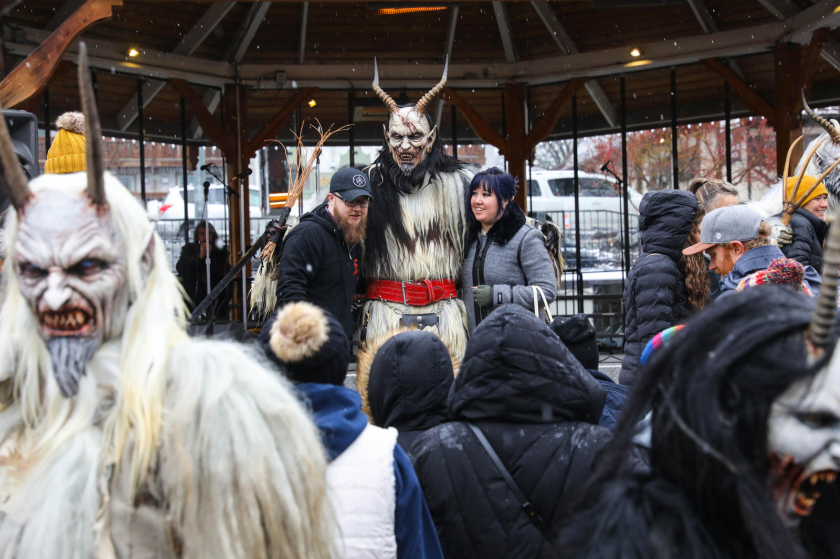
Krampus is a demon that appears in the folklore of Alpine countries such as Germany and Austria.
The straw Yule Goat in Galve
Before the story of Saint Nicholas - Santa Claus riding reindeer and going down the chimney, the story of a goat bringing gifts to people at the end of the year existed thousands of years ago in the Nordic countries. The goat was named Yule - the biggest winter festival here. Until today, people still keep the good legends of the Yule goat by decorating goats with straw and red silk.
In particular, in the town of Galve - Sweden, there is still a tradition of displaying a giant 4-meter-high straw Yule goat effigy in the square during Christmas. However, for some reason, or because of vandals, the effigy of the goat is always burned before the Holy Night. Over the past several decades, only 14 times the Yule goat has been preserved intact through the festive season. Even today, people place bets to see whether this Christmas the Yule goat in Galve will be burned or not.
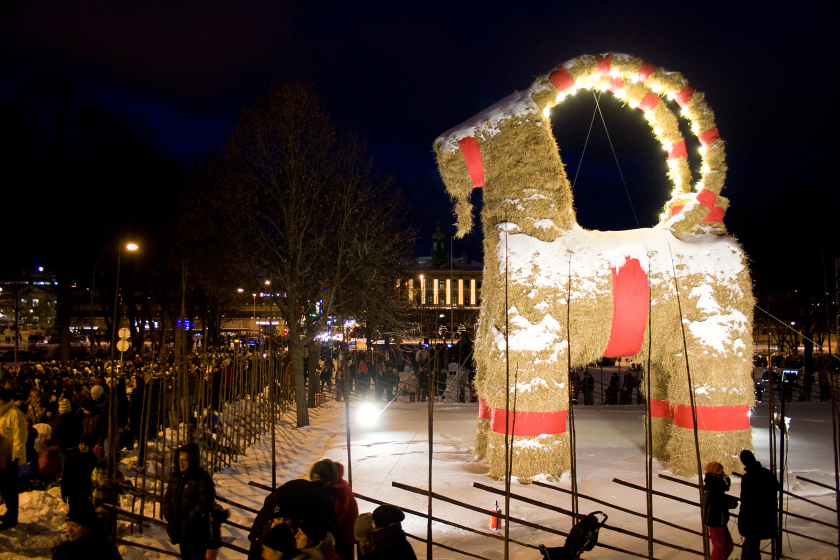
To this day, people still keep the good legends of the Yule goat with the activity of decorating goats with straw and red silk.
13 Santa Clauses in Iceland
People all over the world are familiar with the image of Santa Claus wearing a red shirt, white beard, riding a reindeer. In Iceland, Santa Claus is not like that. They are the Yule Lads, a total of 13 people. They are brothers, children of two scary giants Grýla and Leppalúði. According to legend, the 13 Yule Lads were as evil and mean as their parents. They stole things from innocent people and teased children.
Over time, they became kinder and happier people. Each of them would visit the children 13 days before Christmas. Children would leave a shoe in their bedroom window every night. If they were good, they would leave candy or small gifts. On the contrary, naughty children would only receive a potato.

In Iceland, Santa Claus is the Yule Lads, of which there are 13 in total.
Tree decoration with spider web in Ukraine
Unlike European countries that celebrate Christmas on December 25th, in Ukraine it is a little later on January 7th and the All Hallows Eve is called Sviaty Vechir. Ukrainians decorate their Christmas trees with spider webs and believe that whoever is the first to see the web on Christmas morning will have good luck all year.
This tradition originated from a folk tradition about a poor Ukrainian family who did not have enough money to buy Christmas tree decorations. The next morning, the children woke up to find the tree covered in gold and silver spider webs. Since then, Ukrainians believe that covering the tree with spider webs will bring prosperity and good fortune to the family.
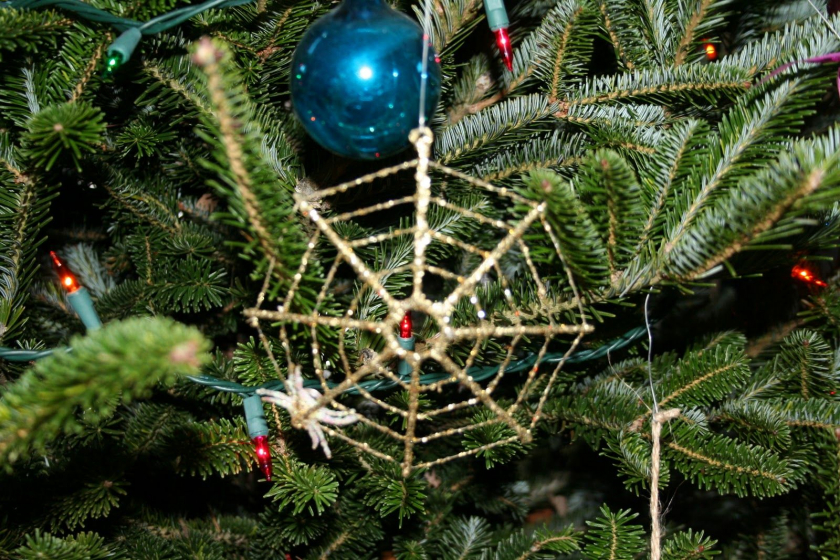
Ukrainians believe that covering a pine tree with spider webs will bring prosperity to the family and prosperity in business.
Philippines Giant Lantern Festival
The Philippines is the country with the second largest Catholic population in Asia and Pampanga is considered the land of “landing angels” in the Catholic faith of the islanders. Therefore, every year, San Fernando City, Pampanga Province organizes Ligligan Parul (also known as the giant lantern festival) with colorful lanterns symbolizing the star of Bethlehem.
These lights are called parols, which comes from the Spanish word "farol," meaning lantern or light. Each parol consists of thousands of lights that illuminate the night sky. The festival has turned San Fernando into the "Christmas Capital of the Philippines."
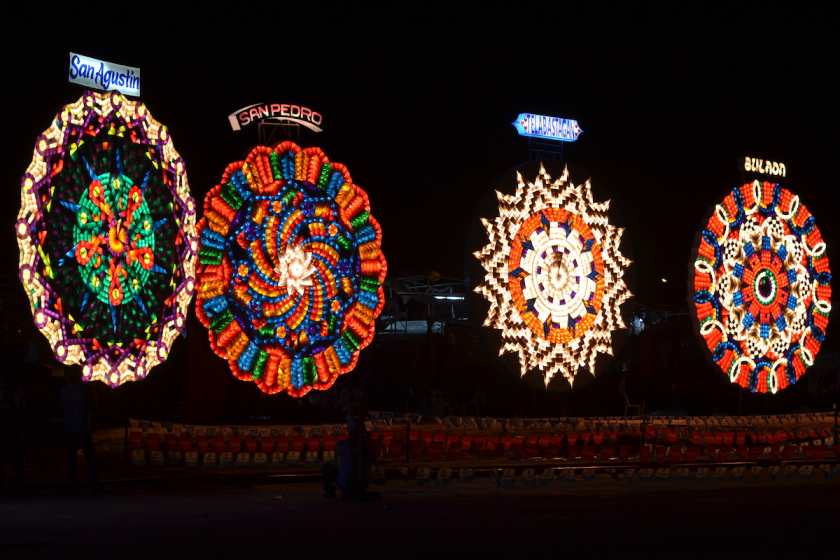
The festival has turned San Fernando into the "Christmas Capital of the Philippines."
The tradition of hiding brooms and mops in Norway
According to Norwegian beliefs, Christmas is the time when witches and evil spirits appear, so on this occasion, Norwegians will hide all their brooms and mops. Men will shoot their guns into the sky to ward off evil.
In addition, this is also the country famous for giving the Christmas tree to England (located in Trafalgar Square, central London) every Christmas as a thank you to the British people for helping Norway during World War II.
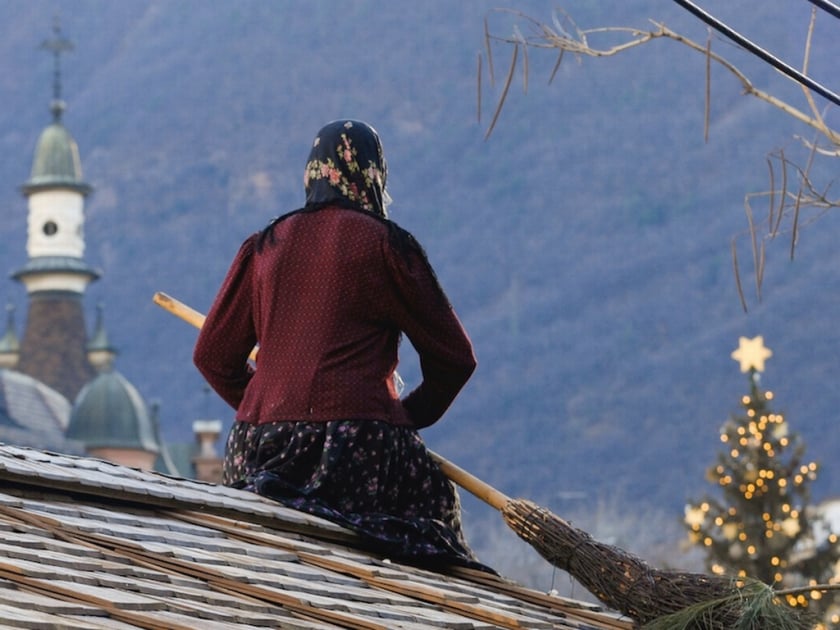
Christmas is the time when witches and evil spirits appear, so on this occasion, Norwegians will hide all their brooms and mops.
Christmas is celebrated twice a year in Australia.
Unlike other countries around the world, instead of celebrating Christmas in the cold winter air, in Australia, Christmas falls in the summer. The weather here these days often reaches 30 degrees Celsius, so it is not unusual for families to head to the beach to celebrate Christmas.
However, in July - the coldest month of winter in Australia. People here will treat Yulefest (also known as Yuletide) as an unofficial Christmas. Activities such as eating barbecues and gathering around the fire with hot drinks are loved and become popular with families.
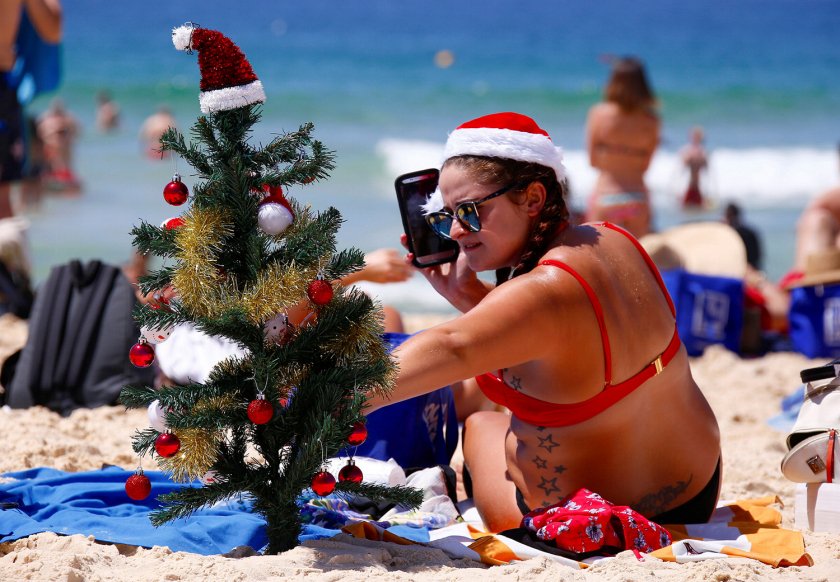
Instead of celebrating Christmas in the cold winter air, in Australia, Christmas falls in the summer.
Decorate palm trees instead of pine trees in India
India has about 2.3% of its population as Christians, but since it is the second most populous country in the world, that number is equivalent to about 25 million people. Christians here also celebrate Christmas very bustlingly and exchange gifts like any other country in the world. But instead of using pine and fir trees as symbols of Christmas, they use palm trees, mangoes and bananas. Banana leaves are also used as home decorations instead of bay leaves and some other types.
This custom has been around for a long time, and when you come here during Christmas, you won't have to look up at the towering Christmas trees, but instead, take pictures with palm trees, bananas and mangoes.
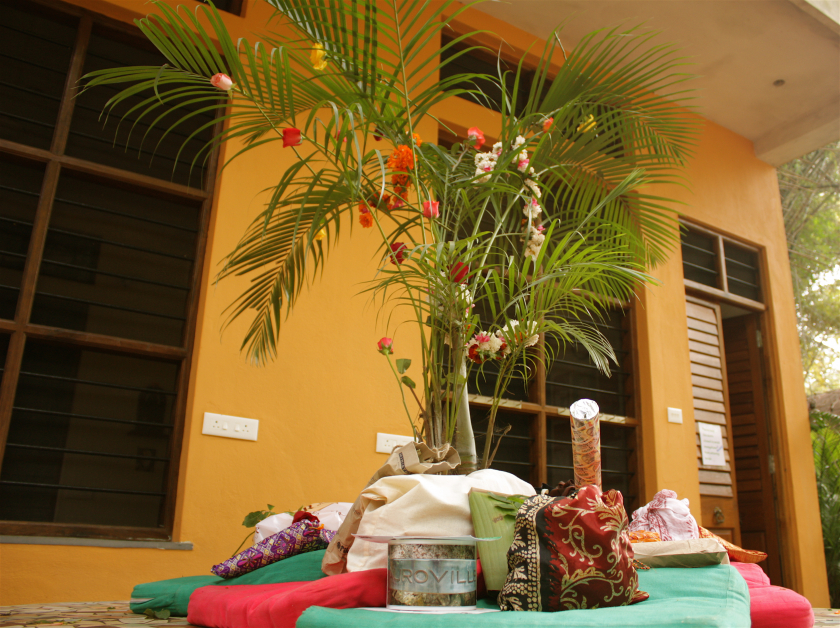
Instead of using pine and fir trees as symbols of Christmas, Indians use palm trees, mangoes and bananas.
St. Lucia's Day in Sweden
Swedish Christmas begins with Saint Lucia Day on December 13. Lucia was a third-century martyr who brought food to persecuted Christians. Traditionally, the eldest daughter of the family would paint a portrait of St. Lucia, dressed in a white robe in the morning and wearing a crown made of branches with nine candles, and serve her parents cake and coffee or mulled wine.

Usually, the eldest daughter of the family paints a portrait of St. Lucia, dressed in a white robe in the morning and wearing a crown made of branches with 9 candles.
Buy Spanish Christmas Lottery
Spain's Christmas lottery, known as El Gordo, dates back to 1812 and is a major event in the festive calendar. With rules allowing multiple sales of the same number, there are often multiple winning tickets in different towns or cities. In Spain, families, friends and colleagues often buy the lottery together and consider it a holiday tradition. Then, everyone gathers around the TV, radio or phone, anxiously waiting for their luck on December 22. This is a state lottery and is for charity.























